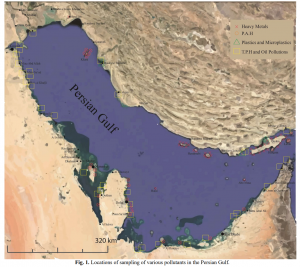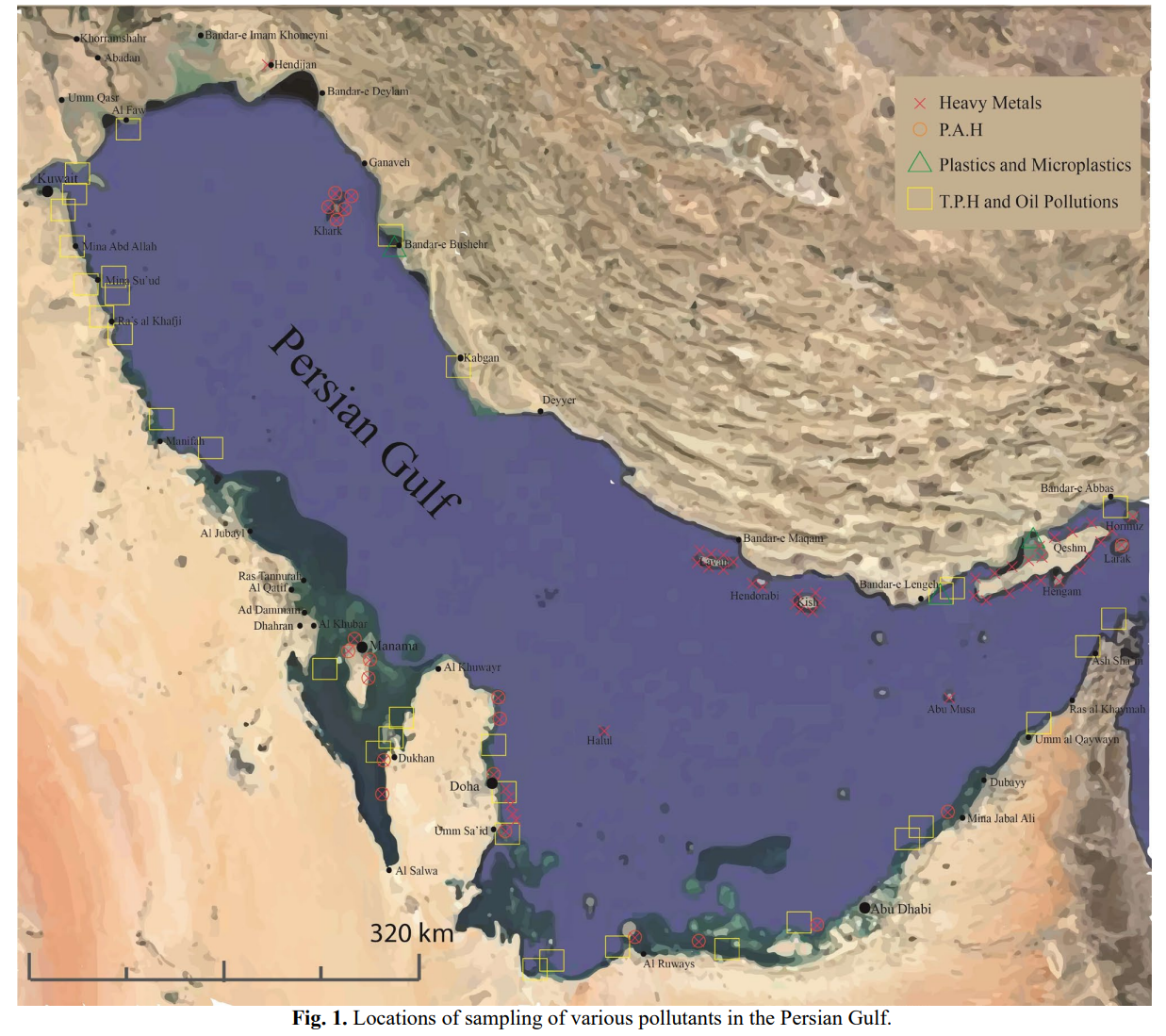Aquatic environments are among the most vulnerable habitats that affect all Organisms. The Persian Gulf is home to numerous plant and animal species, and the biological safety is at risk due to its numerous human activities. Traffic of numerous oil and commercial vessels in the area, waste water, desalination, proximity of numerous industrial, refinery and petrochemical units to shores and rivers, oil rigs, fishing, and tourism activities are potential hazards to the environment and should lead to severe chemicals and physicals pollution into the Persian Gulf ecosystem. All this while the Persian Gulf is highly vulnerable due to various natural in the reason of such as low water circulation due to isolation, high evaporation, and low water depth. In this article, previous studies on the status of pollutants in the Persian Gulf have been reviewed. Much of the research on Persian Gulf pollution has focused on hydrocarbons and heavy metals. However, according to recent research, the amounts of these pollutants have been lower than the allowed levels. Also, further research into the impacts of plastics and microplastics on the Persian Gulf ecosystem should be undertaken.

In the present study, the Persian Gulf sea marginal systems from different locations along Iran were selected for Heavy Metals, PAHs and plastic source
identification and risk evaluation. The levels of Heavy Metals, PAHS and plastics in the Persian Gulf sea sediments are much higher than their background
values, which suggests the involvement of anthropogenic emissions. The concentrations of pollutants in different regions are consistent with local
key industries and industrialization levels.
The result suggested that the pollutants in the most study areas were not contaminated-weakly contaminated, but was contaminated-heavily contaminated in some pollution hot spots. It requires local governments to formulate more effective policies and regulations to protect the marine environment. Gouvernements also should set ‘zero tolerance for this issue and compel the industries to use biodegradable materials such as starch instead of nondegradable
material. This biodegradable material will then be decomposed by microorganisms and ultimately reducing the lifetime of these plastics in the surroundings. In industries, the process of recycling or upgrading of plastic litter should be encouraged.
Read more: https://doi.org/10.1051/e3sconf/202132503013

